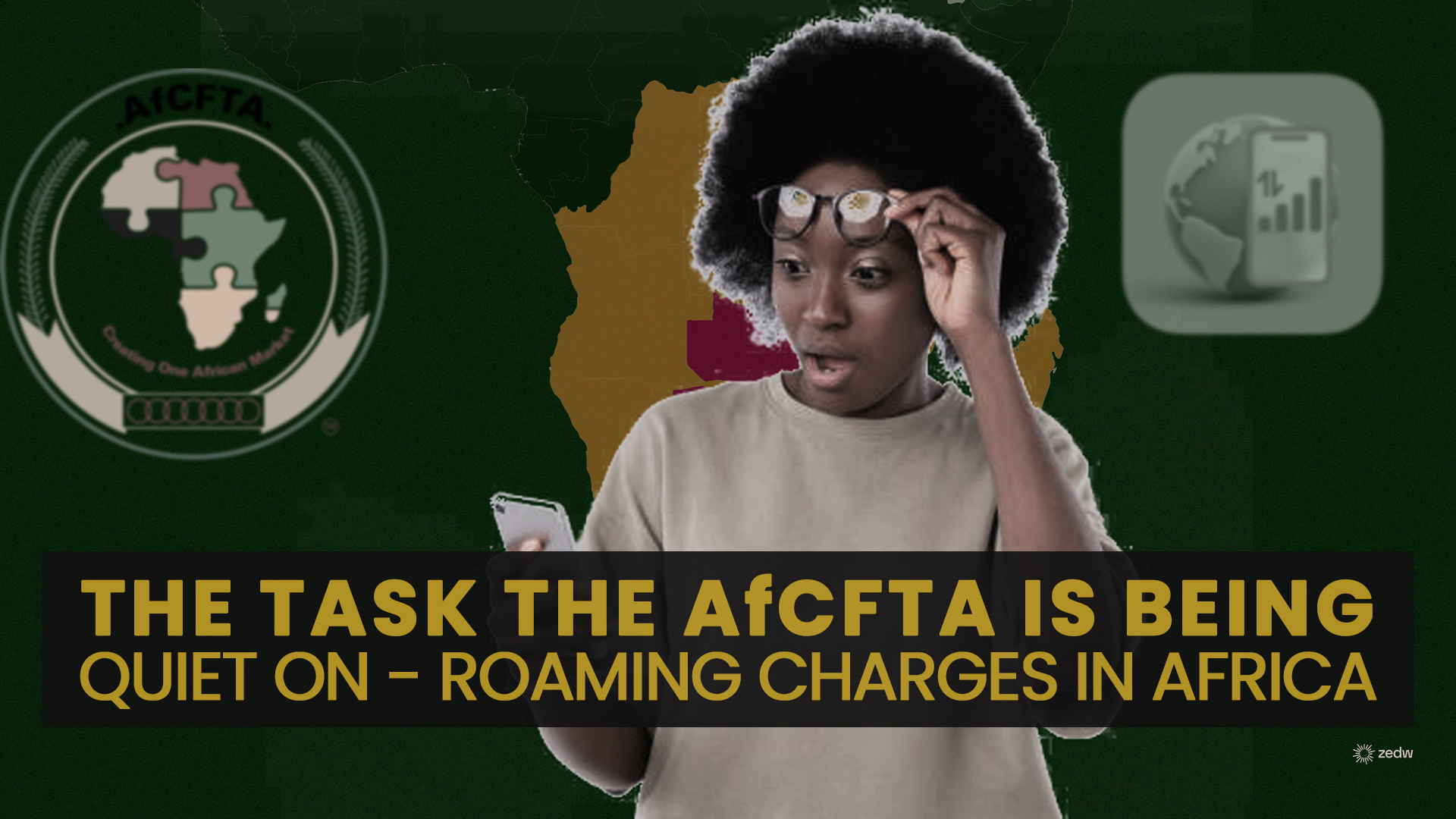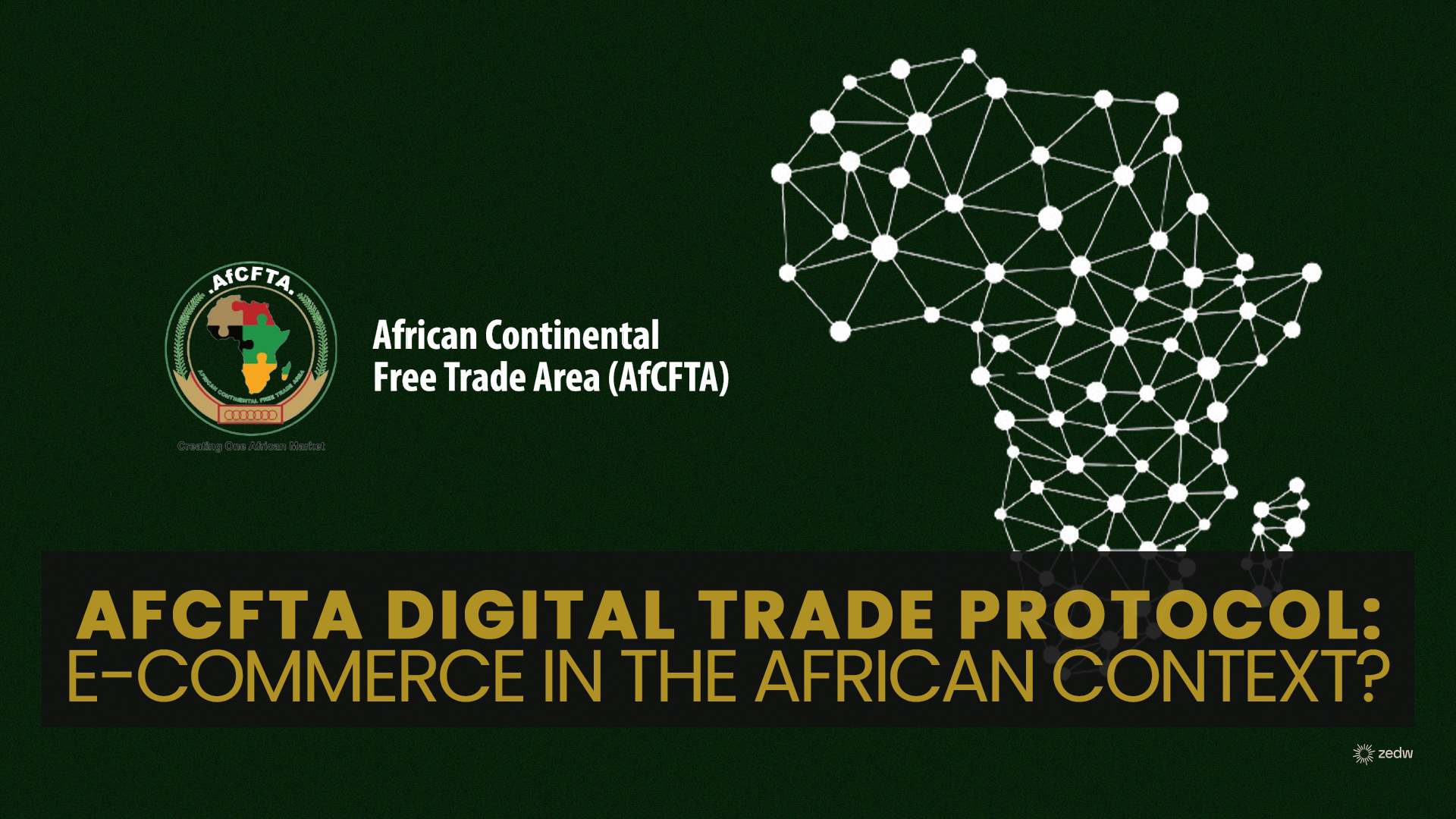The AfCFTA draft policy is a set of documents that aim to establish a single market for goods and services in Africa and promote trade, investment, competition, and intellectual property rights among the member states of the African Union. The draft policy consists of four protocols: the Protocol on Trade in Goods, the Protocol on Trade in Services, the Protocol on Competition Policy, and the Protocol on Investment. What is interesting about the protocols within the AfCFTA is that none zeros in on any sort of communication, which seems like an integral part of trade.
The existing structure of regional roaming
At present, roaming on the continent is quite disjointed and fragmented. There are nations with bilateral agreements, groups of nations within the same trade bloc that have set up their cross-border communication agreements, and service providers operating in multiple markets that have roaming policies in place for their subscribers.
Southern African Development Community (SADC) Policy on roaming
In 2015, the SADC roaming policy was approved which was a policy document aimed at harmonizing roaming service charges and their associated taxes across all SADC member states. Some of the notable measures are as follows:
- to address the high charges on roaming services within the Region
- to harmonize the costing and pricing of roaming services within the Region
- to develop a roaming cost model for determining cost of roaming within the Region
- to provide minimum safeguards for consumers of roaming services, to empower them to make informed decisions.
Source: SADC Roaming Policy
SADC One Network Area (ONA)
Malawi, Botswana, Zimbabwe, and Zambia announced in June that they would be scraping off roaming fees between these member states.
Ms. Lopi cited the recent agreement by four SADC Member States namely, Botswana, Malawi, Zambia and Zimbabwe to scrap mobile roaming charges, as an example of SADC’s success stories.

Common Market for Eastern and Southern Africa (COMESA) policy on roaming & challenges
COMESA published a gazette proposing all the 19 member states scrap roaming fees back in 2018. The key decisions made by the council in line with roaming under the subject of Prices of ICT Services included:
- Member States should abolish roaming charges in the COMESA Region
- ICT regulators are encouraged to carry out studies to reduce the interconnection rates and reduce or eliminate the roaming charges
Source: COMESA Gazette
Rocky implementation of a One Network Area in the East African Corridor (EAC)
As is with the SADC ONA, the EAC also formed an ONA comprising Kenya, Uganda, Rwanda, and South Sudan. The aim was to harmonize roaming charges to a flat fee of US$0.10 per minute for calls as well as remove tax surcharges on data traffic that originates and terminates within the EAC ONA.
In 2018, this project hit a roadblock as the participating MNOs started reverting back to pre2015 roaming surcharges. One after the other, the four EAC ONA members upped their calling rates to US$0.16 per minute from the agreed-upon US$0.10 per minute.
MTN, one of the biggest MNOs on the continent, only raised its roaming rates for calls to US$0.12 which it can manage to do because of the scale of its operations on the continent.
Yes, we have experienced challenges in the implementation of this project. On paper, it is assumed to be working, but the actual implementation is facing hitches. Currently, there are gaps in the implementation of the project.
Francis Wangusi, Kenya Communication Authority’s director-general
A bit of insight into the rocky implementation showed that the Finance ministries of the participating countries had not put in place measures that aligned with the harmonized roaming charges and that the MNOs themselves just did not stick to the agreement.
There was also a debacle in the region when it came to the tax differential between local and international traffic in Uganda. Once ONA was implemented, grey traffic became a big problem for local operators in the region where grey traffic (mostly international calls) was being terminated at local rates with Ugandan operators reporting daily losses of US$262,000.
With an ONA traffic terminating at less than five cents, rackets emerged in South Sudan where operators of Sim Boxes began to feed international traffic into Ugandan networks at ONA rates. The practice is said to have hit Ugandan operators hard, with one reporting daily revenue losses of Ush1 billion ($262,000).
The East African
The bulk of the grey traffic is being linked to a Juba-based Lebanese gang which at one point was said to have been routing up to 38 percent of Kenya-bound international traffic, which was terminated as local traffic originating from South Sudan.
Uganda installed a mobile network traffic management and fraud detection system which upon going live, was able to pick up the anomalies in traffic and also saw one of the MNOs from the EAC ONA member states losing 70% of its traffic, grey traffic originating from sim box operators.

A case study of the success story that is Europe’s Roam Like At Home (RLAH)
On the 15th of June 2017, the European Union (EU) scrapped retail mobile roaming charges in all EU member states and European Economic Area (EEA) countries. What they observed was a 17x increase in roaming traffic compared with the period preceding the abolishment of roaming surcharges.
One of the key implementations by the EU was safeguards to ensure that the convenience to travelers coming about from the scrapping of roaming charges did not affect the sustainability of the operators. These safeguards comprised implementing price caps for wholesale roaming charges across all operators in member states, and an allowance for operators to apply for the implementation of a fair usage policy to protect themselves against abusive or anomalous use by roaming customers.
Another safeguard in line with sustainability on the part of operators was the sustainability derogation, a measure of the Roaming Regulation intended to forestall any risk of domestic price increases. It allows an operator to impose a small surcharge on roaming traffic on an exceptional and temporary basis. It is authorized by the National Regulatory Authority (NRA) when an operator demonstrates that the provision of roaming services without the application of a surcharge would not be sustainable with its current domestic charging model’ The threshold justifying a request for the derogation is a negative roaming margin of 3%.
89 % of the 175 respondents agreed that EU intervention had had a positive effect in ensuring that roaming users did not pay excessive roaming prices in the EU/EEA compared to what could be achieved by Member States themselves. Furthermore, 48 % felt that the Roaming Regulation had been significantly effective in the development of the digital single market, while 27 % believed it had been moderately effective
Summary Report on the public consultation on the review and prolongation of the Roaming Regulation 2020
| 1 July 2022 – 31 December 2022 | 1 January 2023 – 31 December 2023 | 1 January 2024 – 31 December 2024 | 1 January 2025 – 31 December 2025 | 1 January 2026 – 31 December 2026 | 1 January 2027 – 30 June 2032 | |
| Voice | 2.20 €cents/min | 2.20 €cents/min | 2.20 €cents/min | 1.90 €cents/min | 1.90 €cents/min | 1.90 €cents/min |
| Text | 0.4 €cents/text | 0.4 €cents/text | 0.4 €cents/text | 0.3 €cents/text | 0.3 €cents/text | 0.3 €cents/text |
| Data | €2/GB | €1.8/GB | €1.55/GB | €1.3/GB | €1.1/GB | €1/GB |
Fragmentation of policies is slowing down progress.
Fragmentation of the roaming policies across the continent results in individual MNOs taking too long to implement these measures. This is because for it to be effective, all member states involved, their MNOs, and the National Regulation Authorities should coordinate their implementation.
Each Mobile Network Operator (MNO) is responsible for setting the retail price for IMRs for its customers. To be able to offer IMRs, an operator needs to enter into an agreement with a foreign network operator. Once an agreement is reached between the two MNOs, the necessary technical arrangements and tests are then undertaken. In most cases operators will agree to roaming arrangements on a bilateral basis. In other words, even if a group of operators share common ownership, an operator wishing to enter into a roaming agreement, with one or more of those operators, will negotiate individually with each of them. Some operators also use their own roaming contracts to enable entities called ‘roaming brokers’ to resell those roaming relationships. This can allow roaming between two networks which have no direct contractual relationship. Recently, some operator groups and intermediaries have set up roaming hubs.
CCPC ORG
Economic dynamics affecting harmonized roaming rates
As we observed in the EAC ONA, one of the bigger reasons why it failed to be sustainable was that the financial institutions of member states had not harmonized taxes associated with telecommunications providers.

A point to note is how each territory has its own set of special taxes applied to telecommunications services as well as different pricing structures of telecom operator licenses. What seems consistent is that the tax rates applied to the telecommunications sector are orders of magnitude higher than tax rates applied to other industries. There are also very big variances when it comes to the differences in tax rates and license fees from territory to territory. For example, in South Africa, the tax rate associated with license fees is 1% whilst in Mali it stands at 49%. In such a scenario, it will prove a bit more difficult for Mali to adjust its roaming fees.

In addition to the tax rates, there are also factors that include the reliability of utility services within the different territories. In territories where the power supply is sporadic, further capex is spent on backup power adding to the costs that these MNOs incur. These also vary by territory based on the severity of the utility power outage as well as the cost of backup power be it the cost of fuel per liter for backup generators or the cost to acquire a sufficient solar backup solution. MNOs in Zimbabwe are paying an estimated $363,322,314 in fuel overheads associated with running generators for backup power.

AfCFTA has its work cut out for it in creating a region-wide ONA
A continent-wide ONA is an initiative that will make it a lot easier for travelers to enjoy the standard rates that they are used to back home when they are traveling abroad. Be it for business, leisure, or tourism, it is part of the value chain associated with trade.
The frameworks for this to work on paper have been outlined by the ITU and other trading blocs in the region in the form of the SADC ONA and the EAC ONA. Some lessons have been learned from the EAC ONA that can help inform a more holistic approach to this initiative.
Where there seems to be the biggest hurdle is involving all the necessary stakeholders within the value chain to ensure that certain realities are accounted for when implementing this initiative. This hinges a lot on the finance ministries of member states on the tax component of telco’s expenses and the individual telco regulators for a more streamlined licensing fee structure for the telecom operators. It has to make sense for both the customer and the operator.







